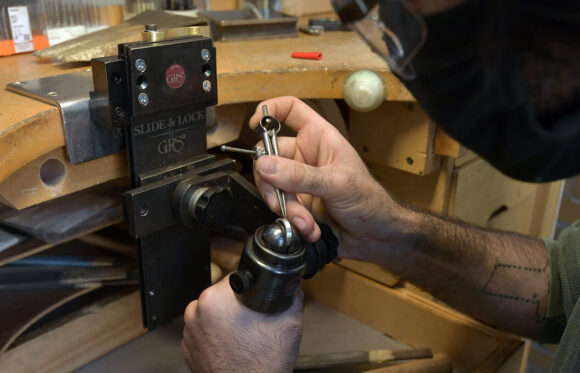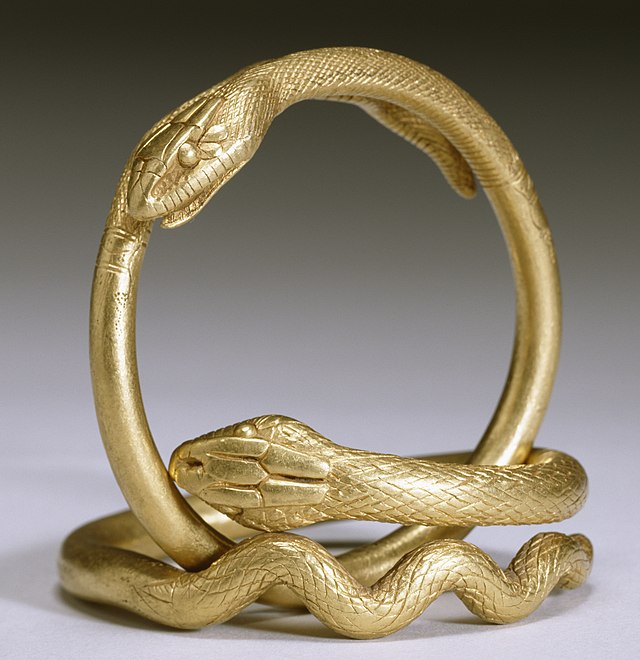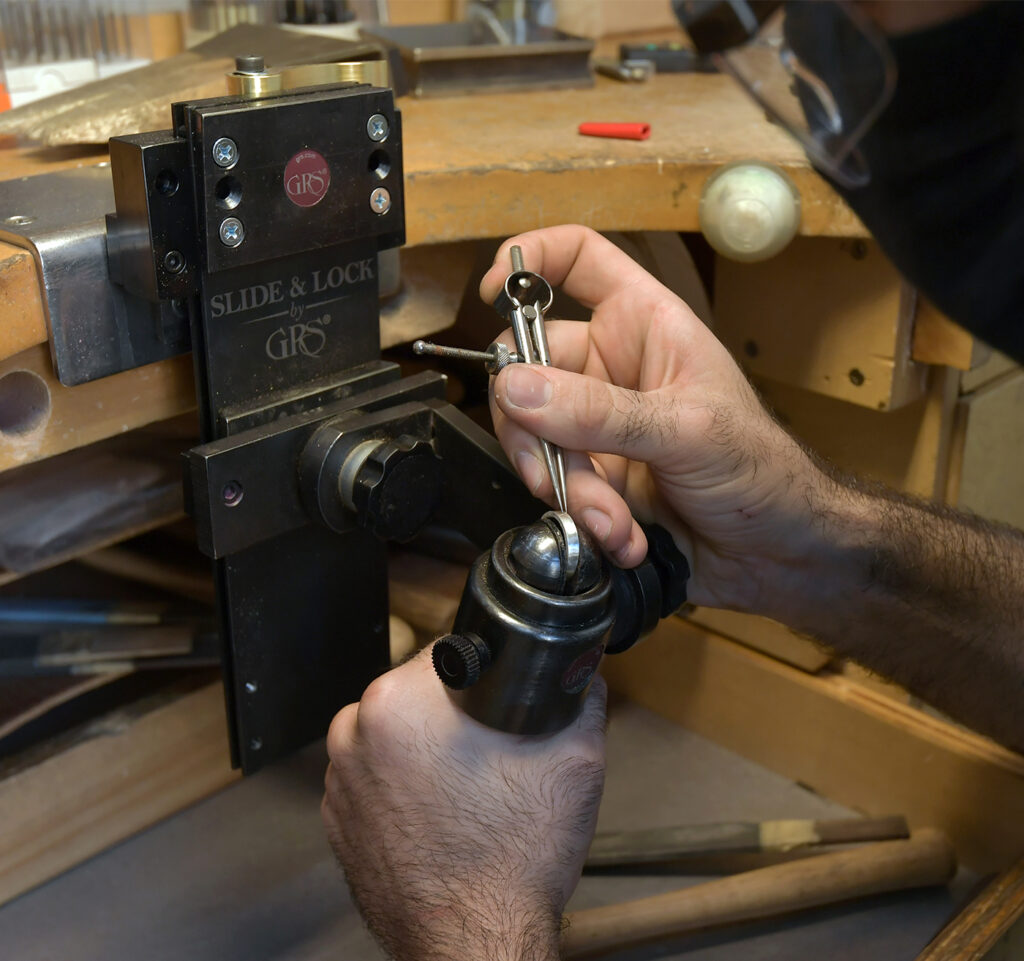Handcrafting the Wedding Band


Is there any more iconic piece of jewelry than the classic wedding band? Historians and jewelers generally originate the practice of giving a ring to a lover to over 3,000 years ago and attribute the ritual to the ancient Egyptians. And it was also the Egyptians, specifically Egyptian pharaohs, who are credited with first wearing rings as a representation of eternity, both through a ring’s symbolic resemblance to the sun and moon they worshipped, and the nature of a circle having no beginning and end.
You may have even seen examples of Egyptian ouroboros rings showing a serpent swallowing its tail, also a depiction of eternity. Even the practice of wearing a wedding ring on the fourth finger of the left hand originated with the Egyptians who believed that finger contained a vein of love that led directly to the heart. The Greeks later adopted the Egyptian custom of exchanging rings, initially using copper and iron. Gold was more commonly used by the 2nd century.
The practice of exchanging or bestowing rings has continued through the centuries. While we look at wedding bands today as symbols of love and fidelity, historically they often served as a sort of wedding dowry or a sign of a wedding transaction or alliance between two families. Today, though, rings are viewed as a much more personal expression between two individuals.
But, as simple as the ring shape is, creating a beautiful wedding band is itself an exacting and demanding process. Sizing, design, material, and the incorporation of additional design elements such as precious or semi-precious stones must all be carefully considered.

Depending on the material, ring size, and design, even a simple wedding band could take weeks to create. One method we teach in our Jewelry Making & Repair program is casting a ring using a wax model. Also known as “lost wax casting,” the ring size and shape is initially made in wax then molding material (known as “investment”) is set around the wax model. When the wax is melted out, it forms a precise ring-shaped cavity where molten metal or even glass can be poured in. This is just the initial shape. The true beauty and unique character of the ring is released in the polishing and finish work.
A wedding band is designed to last a lifetime and beyond. When it is painstakingly handcrafted, its creation becomes part of a couple’s unique love story, and the ring itself is destined to become a beloved family heirloom.
Interested in knowing more about jewelry making? You’re in the right place. Check out our career training Jewelry Making & Repair program or our community education jewelry making classes.